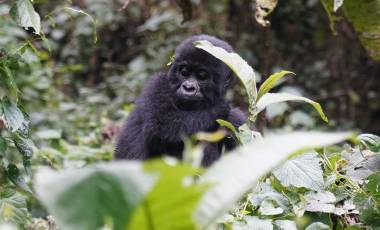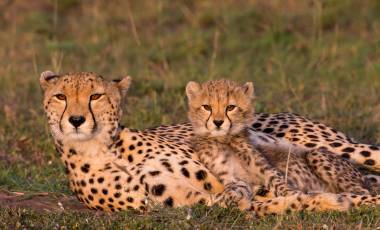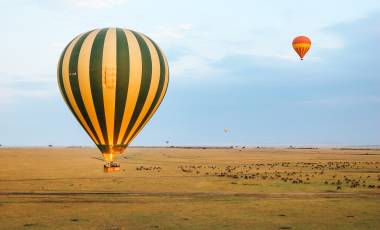Read time – 4 minutes
Mara veteran, Paul Goldstein recalls his best herd crossing moment.
‘Remember Kijana’ Boniface murmured, giving me his pet name – young boy – for someone who was not only his boss but also ten years his senior, ‘the migration is not just about crossing rivers, it is about a movement of animals unique to Africa.’
The Great Migration
He was right. This annual commute of a million or more ungulates turns the plains dark, sending dust devils spiralling into the sky. It is enchanting, mesmerising and above all intimidating. The earth shakes as thousands of hooves thunder past, all the animals in a hurry to graze.
It transforms both the Serengeti and Mara and supports a lengthy food chain. The Masai Mara is the northern dry season stronghold for the herds. Depending on rain, grass levels and the whims of the grazers they can remain there for many months and woe betide anyone who tries to predict their movement.
Last year they came in two months early and left a month late at least. Each time they have to bisect the Mara River – the fabled crossings. Boniface was right; it is only a small part of their journey but a dramatic one. To witness nature at its most intoxicating, you need time.
On many occasions I have seen people drive to the river, look around then retreat to the hermetically sealed confines of their big lodges to listen to piped music. Crossings are thankfully not done to order. That day we had waited for six hours (a medium stakeout) and the herds, although numerous were procrastinating in the heat.
Time passed in honeyed drips but eventually, several fawns approached the shoreline. A loud crowd of tourists immediately got up in their vehicle, noisily brandishing cameras and binoculars, causing the skittish fawns to retreat, insulted by this brash, ignorant show of attention.
Two hours later (these Philistines having left) they approached again, but this time a single guinea fowl sent them into a panic and they again backed off. Breakfast had been consumed and a bush lunch was a memory but the prospect was so seductive that no-one showed any inclination to leave.
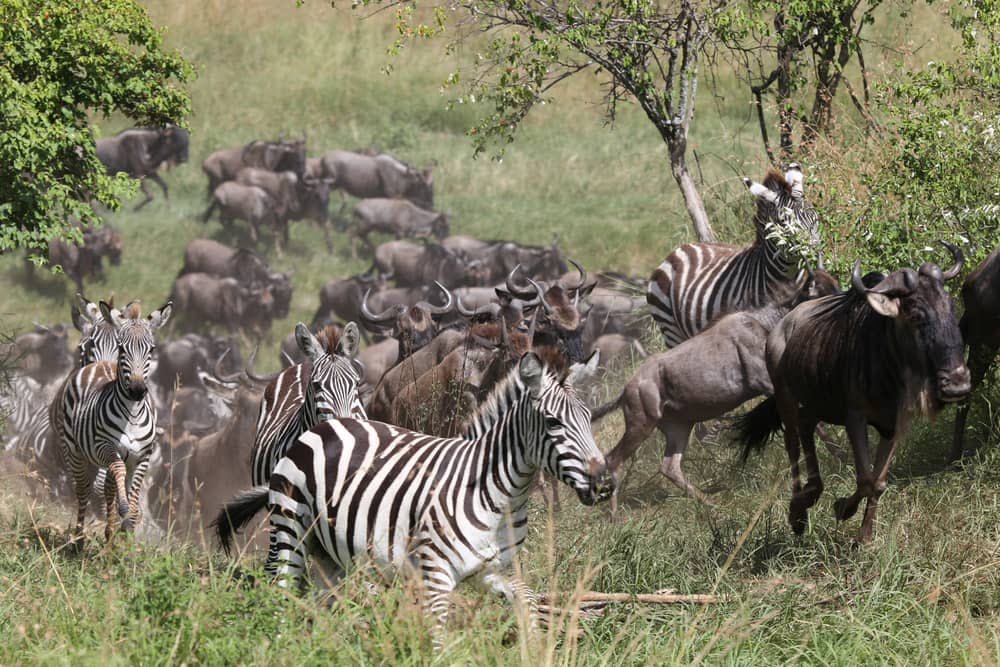 Migration herds
Migration herds
I have always said that zebras are the Germans of the plains, organised and efficient. When they decide to move, it is done with rigorous attention to detail and in regimented style. Two striped stallions approached the river, took a late afternoon drink and decided the crocs were going to chomp smaller prey.
With the hauteur of dressage thoroughbreds, they marched across the shallow waters. ‘No-one move’ Boniface instructed. He was right. Africa’s game parks and reserves are blighted by those Big 5 (a savage butcher’s term) chasing pilgrims, eager to tick off not tune in.
There was a bottleneck of animals at this narrow point stretching back for miles. ‘Let the first few into the water’. By this time, the noise had risen from an inert drone to a high pitched screech. When the first few started clambering up the far bank, their eyes bulging in exertion and trauma, we rose from our seats; astonishingly it went on for three hours.
Never before have I seen such a crossing and I have seen almost a hundred. Photographs were easy as at least 50,000 animals braved the murky waters but no image would ever do anything other than short-change the viewer; it was a phenomenon.
Crocs took their fill but before long were waving the throngs through, their slow metabolism more than sated by the early hors d’oeuvres. There was time for a slice of tamarind cake and a flask of tea, slaking the dry mouths and stomachs brought on by a rush no artificial substance could ever emulate.
Towards evening, the animals’ cries reached a new decibel level as a distant pride of lions closed in on the crossing point. Suddenly it was mayhem. Hundreds carried on with an ‘it won’t be me’ mentality whilst the majority re-crossed – a tough manoeuvre – like trying to get out of Waterloo Station at 8.15am on a school day.
The lions then lazily sat down. These are times of plenty; their stomachs sagged like badly Botoxed jowls and finally, the wildebeests’ movement decreased to a meandering trickle then stopped. There were, however, casualties struggling in the shallows and one lioness wandered down to the edge before retreating, not wanting to get its paws dirty.
Eventually, the stricken calves, separated from their mums staggered up the incline to be met by the slavering predators. One survived, standing its ground, seeing off the pride but it was unlikely to last the night. Around that time some of us paused for breath, a long breath.
It is easy to have a pop at the Mara; its fertile plains and easy access make it popular – too popular for some pious African purists. But I have always maintained that if you have the time, there is nowhere like it on earth. This is why I return every year and will continue to do so until I can no longer drive a 4WD.
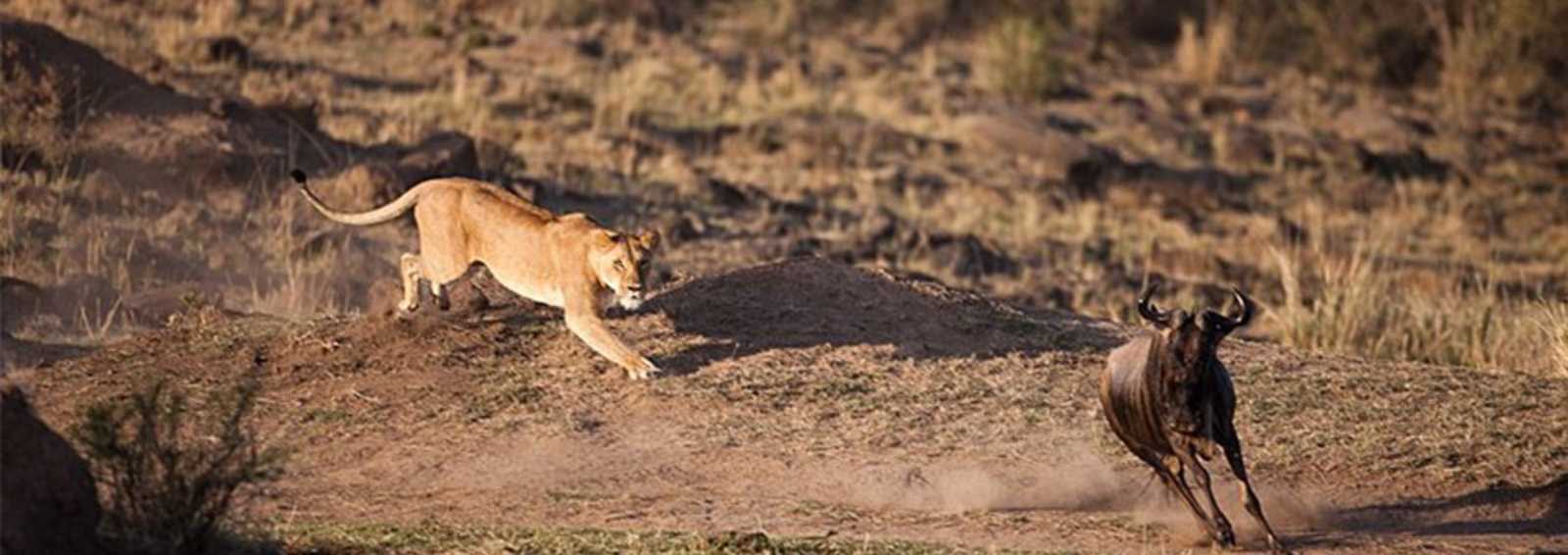 Lion chasing wildebeest
Lion chasing wildebeest
‘The crocs have eaten, the lions have eaten – it is time for us to do the same’ Boniface said, smiling as his dazzling Masai jewellery reflected the kind evening light. Hunger and bladders drove us to return to camp but little was consumed that night.
Appetites were jaded by the realisation that everyone had been part of something exceptional as well as disturbing, their long vigil rewarded by nature at her most raw well beyond the books, magazines, National Geographic channel and brochures.
This was only day one of the safari.
See below for a selection of trips which visit the Masai Mara.
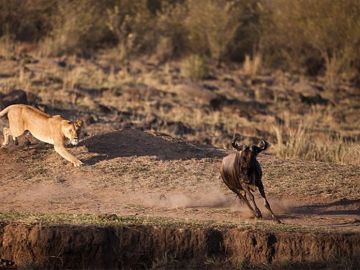
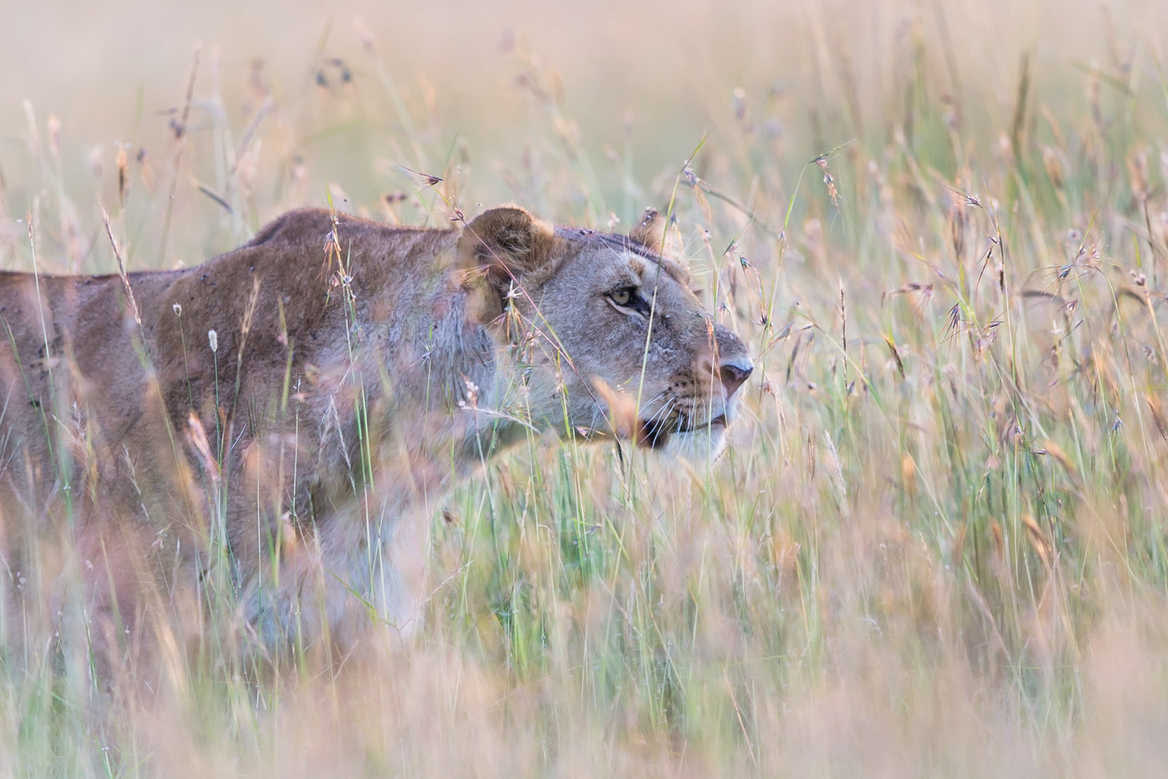 Lion in Kenya’s Masai Mara
Lion in Kenya’s Masai Mara Sunset at Masai Mara
Sunset at Masai Mara